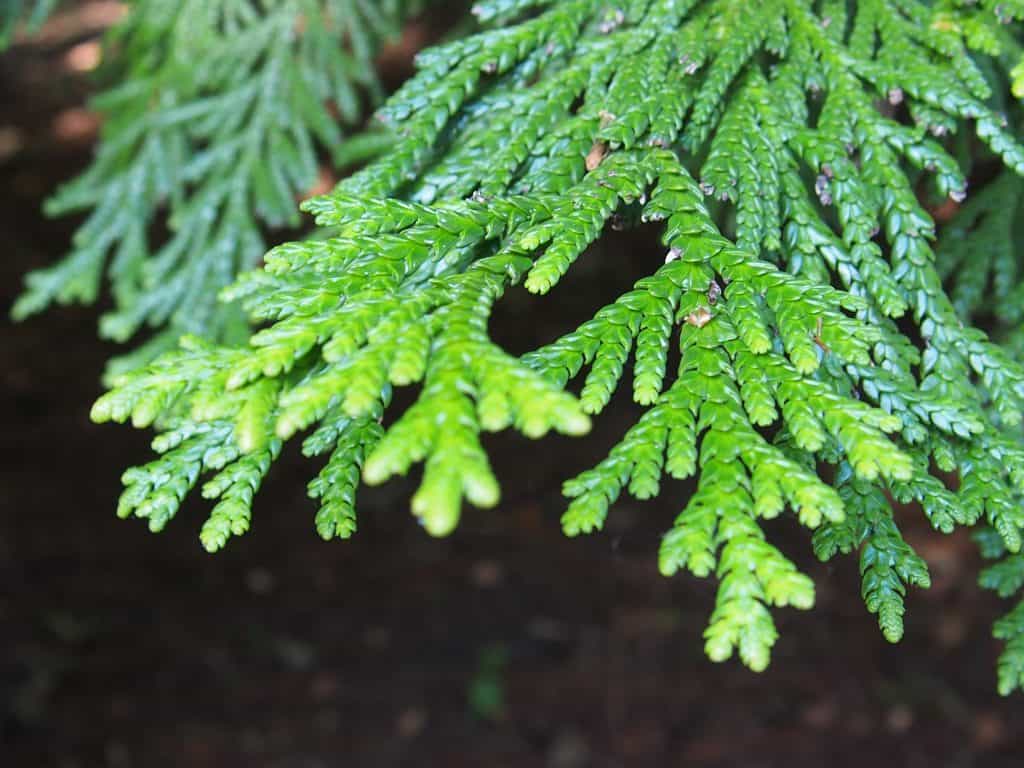Scale-like Leaves: Asnaro

Asnaro
I was really excited to find these labeled specimens in the Hokkaido University Botanical Gardens. Only one problem, I’m having trouble distinguishing them, now that I am back at the office. I think this one pictured above is asunaro/asnaro (Thujopsis dolabrata). I really love the scaly configuration of these leaves.
The asunaro is also called hiba. It’s an evergreen tree in the cypress family. This particular specimen was found in Hokkaido so it’s a rarer variation, the Thujopsis dolabrata var. hondai.
Nevertheless this tree grows quite readily across the four islands of Japan in the Thujopsis dolabrata var. dolabrata variety. According to the The International Union for Conservation of Nature’s Red List of Threatened Species this species is stable. It gets an LC (least concern) rating as it is planted in state-controlled forests where it grows well. Read more about hiba-arbor-vitae here on the IUCN Red List.
Hiba Arbor-vitae is an important forest tree in Japan and is one of the ‘five trees of Kiso’ (all are conifers) originally reserved for imperial use. There are now managed state forests with this species as the dominant tree besides some imperial forests. Its light, soft, resinless and durable wood is used in construction, for bridges, buildings, furniture, the wooden basis of lacquer work, wood carving, etc.

The choice for your ofuro
As far as ofuro go we recommend asnaro more often than any other wood because of the cost advantage and the durability of this wood. It is harder to damage than say hinoki or sawara. We think you will love it too.
